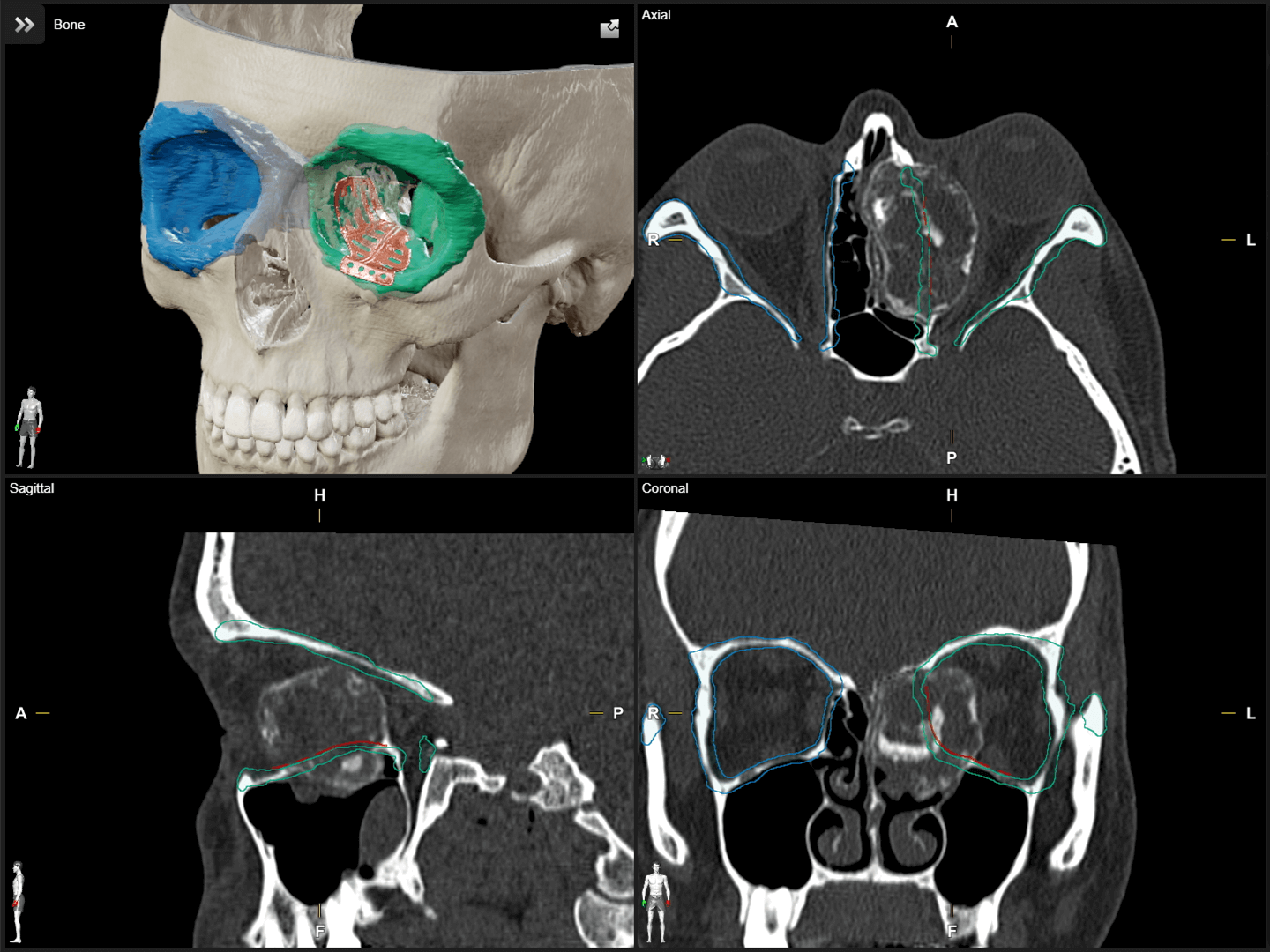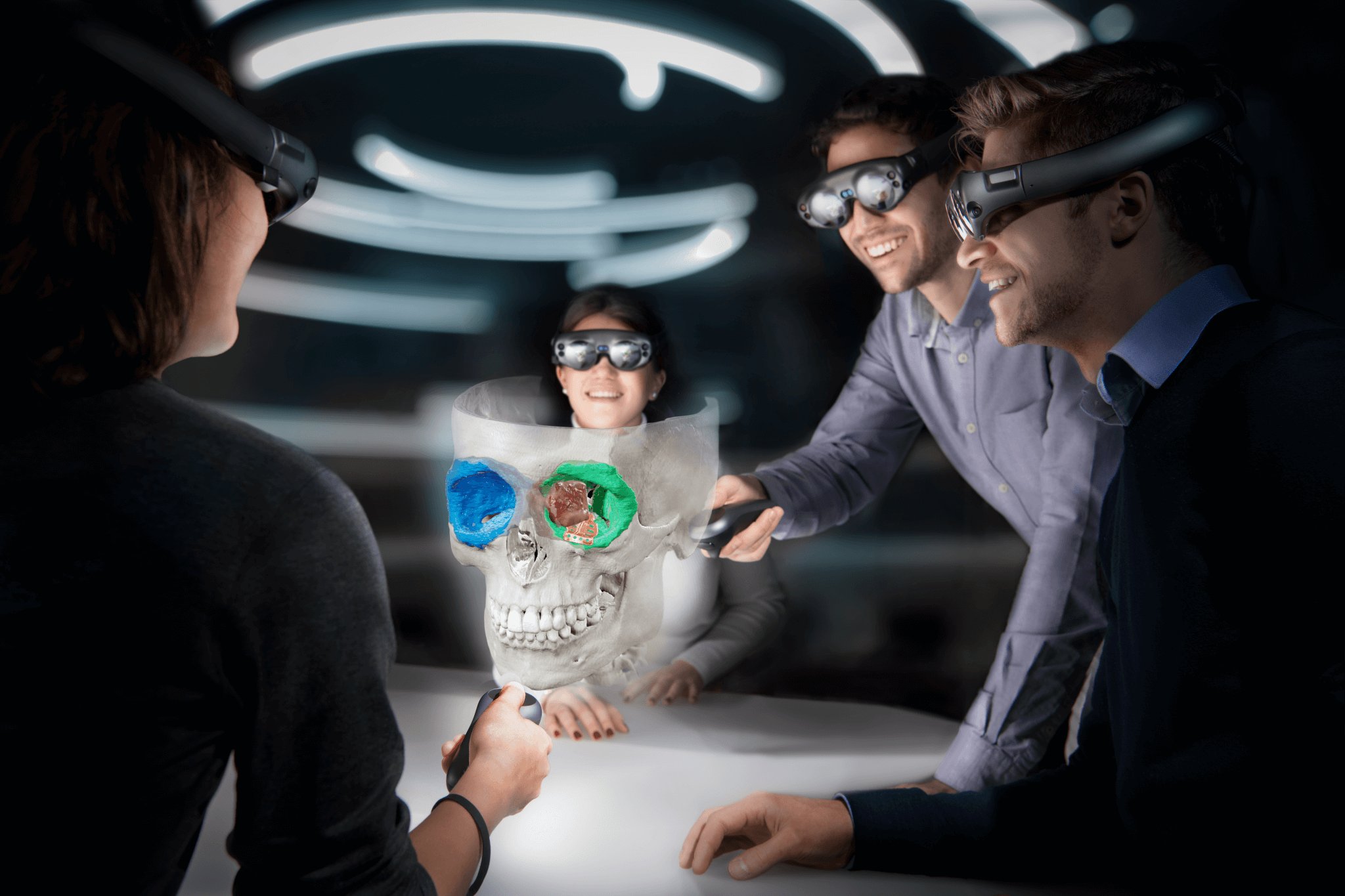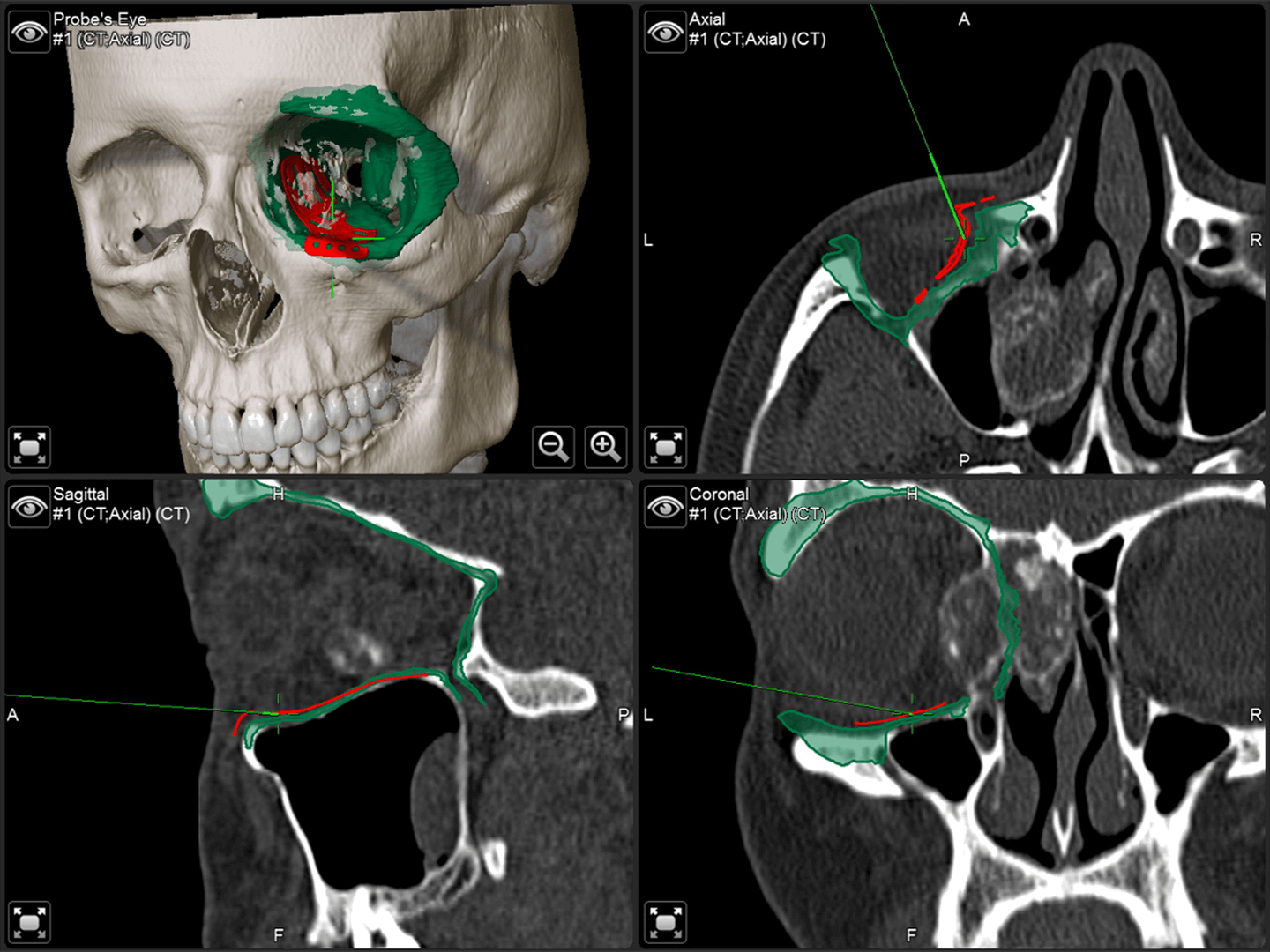We put the future of CMF surgery in your hands
Digital CMF surgery gives you the tools to advance your practice — and the field of craniomaxillofacial surgery. These sophisticated digital tools for complex facial reconstructive surgery and tumor resections enhance every step of surgery from planning and mixed reality visualization to navigation and intraoperative imaging. Increase your surgical efficiency while attaining the high accuracy outcomes you pursue.
The future of CMF is digital
We’ve expanded and diversified our craniomaxillofacial portfolio with modular digital technologies that support you throughout surgery. You can easily add state-of-the-art planning, mixed reality visualization, surgical navigation and robotic intraoperative imaging to your existing workflows as needed.
Let your surgical work flow
How Brainlab technologies support craniomaxillofacial workflows2
Shape the face of your CMF surgeries with digital technologies
Open to Everything
Brainlab has always had an open framework that allows free choice. This open system lets you incorporate the devices and implants you already use into the Brainlab CMF environment including standard and patient-specific models. You’re free to choose the technology that works for you.
Not yet commercially available in several countries (CE mark available). Please contact your sales representative.
The statements of the surgeons reflect only personal opinions and experiences and do not necessarily reflect the opinions of Brainlab or any affiliated institution.




